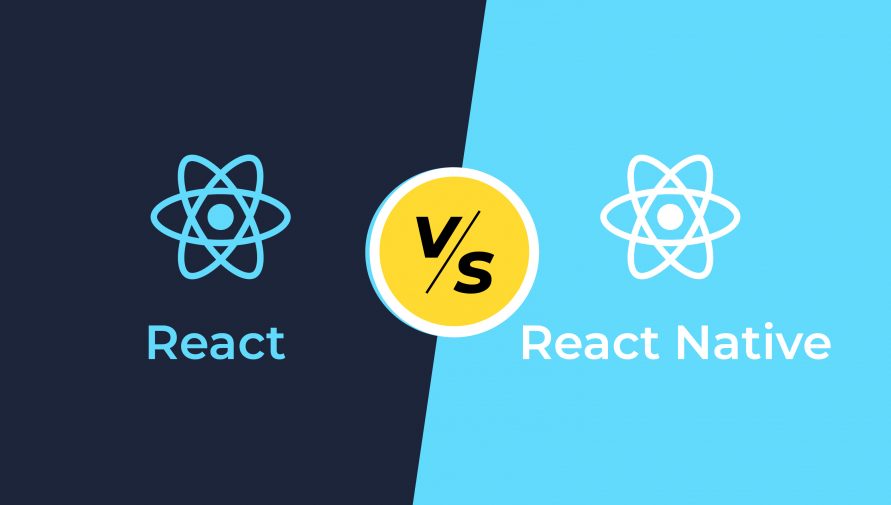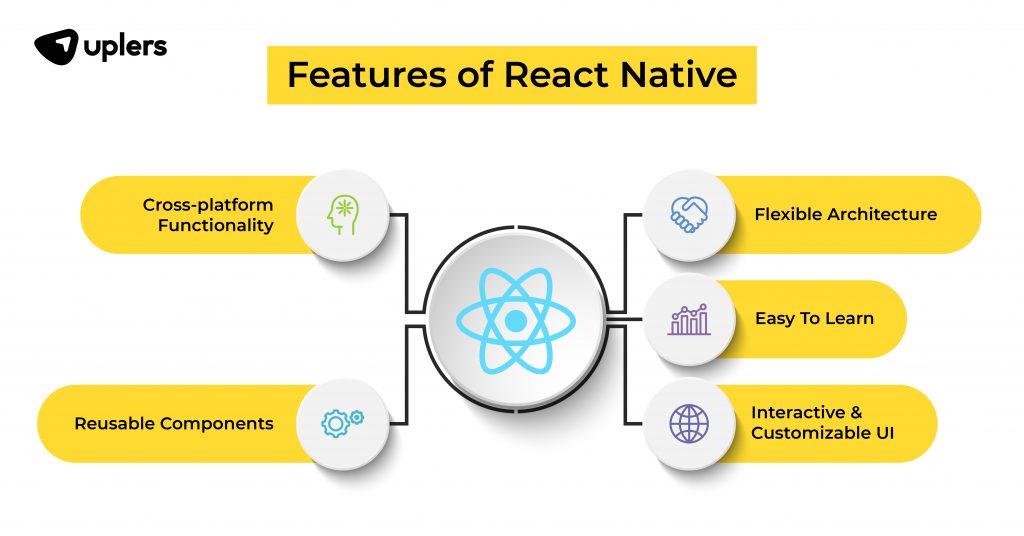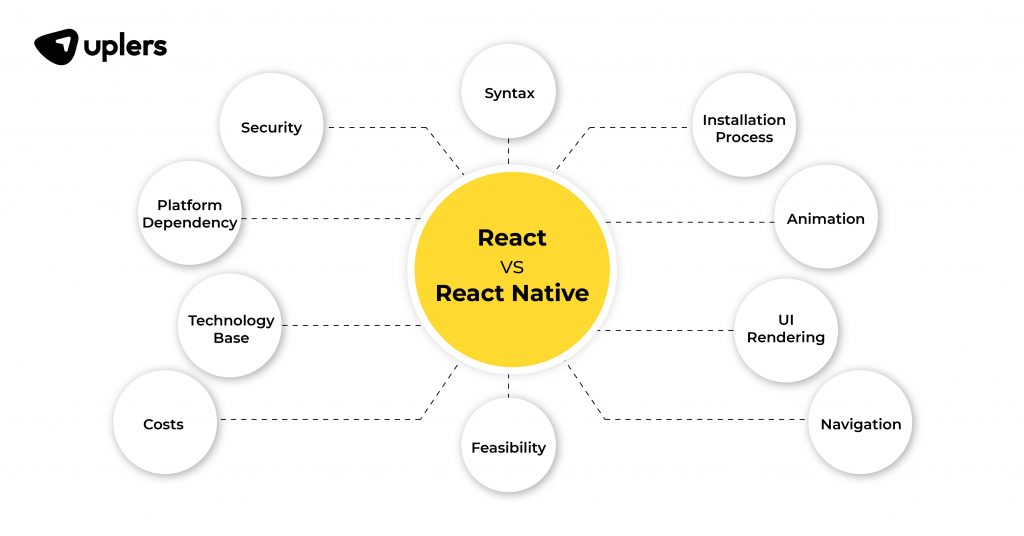React vs. React Native: The Difference Between ReactJS And React Native
- Shreya Srivastava
- September 30, 2022
- 11 Minute Read

React and React Native are two popular development technologies at present, however, the debate of react vs react native has existed ever since their conception. React, or Reactjs, is primarily a web application development framework, whereas React Native focuses on mobile app development. But due to their similar names and origins, they are often confused with each other.
That’s not to say that these two frameworks don’t have similarities. Reactjs and React Native were both launched by Facebook. ReactJS was publicly launched in 2013, and React Native was made available in 2015.
Since their launch, these two frameworks have been a delight for developers. Both are free and open-source libraries to build user interfaces and components. They are maintained by a community of developers, programmers, and organizations. And they are both extremely popular in their niche.
React is used by 3% of all websites worldwide, giving it a 3.6% market share of all JavaScript libraries. Its popularity has only been increasing with regular updates and advancements.
React Native isn’t behind. The Stack Overflow Developer Survey 2022 states that React Native is the 6th most popular cross-platform mobile framework, with 14.51% of votes.
If we look at React vs. React Native, the simple answer is that they might be similar at the core but have enough differences to be distinctive. Industry professionals are often confused between the two, so let’s dive into how Reactjs is different from React Native in detail.
What Is ReactJS?
To understand the difference between React and React Native, it’s important to first understand each of these frameworks. Let’s start with React.
React, Reactjs or React.js is a popular JavaScript library that can be used to build single-page web applications and mobile apps. Since its launch in 2013, it has been used by both small and large organizations for their development activities.
Some popular applications built on React are Facebook, Instagram, Netflix, WhatsApp, The New York Times, and Dropbox.
React can be used to build the viewable layer of applications with reusable components to create a stronger structure. It is one of the best libraries for creating interactive and dynamic user interfaces (UIs).
Features of ReactJS

Here are some of its exceptional features:
- It can update and render components with changes in data. It also provides a declarative view to coders, which makes it easier to read and debug codes.
- Its Document Object Model (DOM) features make it fast and enhances performance.
- You can create dynamic applications with a user-friendly view by writing minimal code.
- Its JavaScript syntax makes it easier to use and build on.
- It has a one-way binding data functionality that helps to reduce errors. You don’t have to rework the entire component to fix a tiny error, thus making the code stable and easily implementable.
- It allows you access to HTML while providing full access to libraries.
- React lets you divide it into multiple components without affecting the DOM.
- It is constantly evolving and being updated by developers around the world.
- It lets you view real-time changes while making them, leaving less scope for errors.
- React offers search engine optimization capabilities by enabling more efficient indexing.
- Its websites are fast, efficient, and high-performing.
Benefits of Building with ReactJS
ReactJS has several business benefits to it:
- It has a smooth learning curve. Developers with a JavaScript background can learn and use React easily.
- It has reusable components, so you don’t need to create everything from scratch for each project.
- It gives you dynamic applications with less coding and more functionality.
- React’s virtual DOM gives a high-speed performance. The virtual DOM exists in memory, and when you make changes to a React component, you don’t affect the DOM directly, thus maintaining smooth performance.
- The ReactJS community is active and has a set of tools to make development tasks easier.
What is React Native?
In the journey to explore React Native vs React JS, the next stop is React Native, with its features and benefits.
React Native, like Reactjs, is an open-source framework developed by Facebook and launched in 2015. It is one of the best libraries to develop native mobile applications for various platforms, like Windows, Android, and iOS. It also has reusable components that can run on multiple platforms.
React Native uses Reactjs for base abstraction, but its library components are different, making it a completely different developmental framework. React Native is primarily used to build UI components for mobile applications. It is used by over 25,000 applications around the world.
Some popular apps using React Native are Instagram, Facebook Ads, Bloomberg, Walmart, and SoundCloud.
Features of React Native

Here are some important features of React Native.
- It has cross-platform functionality with platform-specific code. Thus, your app can work on multiple platforms without changing the code. This saves a lot of time for developers.
- It is easy to learn and build on. Front-end developers with JavaScript knowledge can also work with React Native to create an app.
- It has ready-to-use libraries and reusable components to reduce coding time.
- It can be integrated with any mobile application.
- It has a flexible architecture that makes development tasks faster and easier.
- You can easily associate it with iOS coding. It is also JavaScript compatible.
- React Native apps have interactive and customizable UI.
- Changes in code are visible in real-time during development.
Benefits of Building with React Native
In the war of React Native vs Reactjs, React Native also has multiple benefits that can benefit your business.
- It is easy to learn and has a supportive community to help developers.
- You can use JavaScript knowledge to build native mobile applications.
- Its easily available code saves you time and money during development.
- It undergoes constant improvements and updates.
Now that you know the strengths of both, let’s move to the difference between react and react native.
What is the Difference Between ReactJS and React Native?
You cannot give an absolute answer if you’re asked what the difference is between Reactjs and React Native.
There are a few major differences between ReactJS and React Native and minor, more subtle ones. The first thing to note is that React can be used on all platforms, whereas React Native has certain restrictions.
You need to understand that React is a JavaScript library that can be used to create high-functioning user interfaces for web applications. React Native is a whole framework in itself, with the ability to build cross-platform mobile apps.
So basically, React can be used to build an interactive UI in the form of a JavaScript library. React Native, on the other hand, lets you build a whole framework independent of the platform (Android or iOS).
When it comes to React DOM vs. React Native, we can say that React is a base derivative of React DOM that can be used for the web platform, whereas React Native is its own base derivative. This means that its components may change, but the syntax and workflow remain the same.
To understand React Native vs. React better, their differences can be explored under the following categories.

Installation Process
React, as we know, is a JavaScript library. So, all you need to do is to integrate React into your HTML page in the



